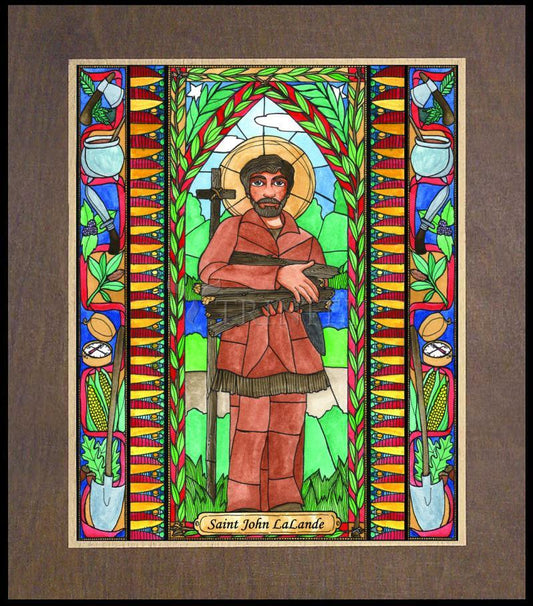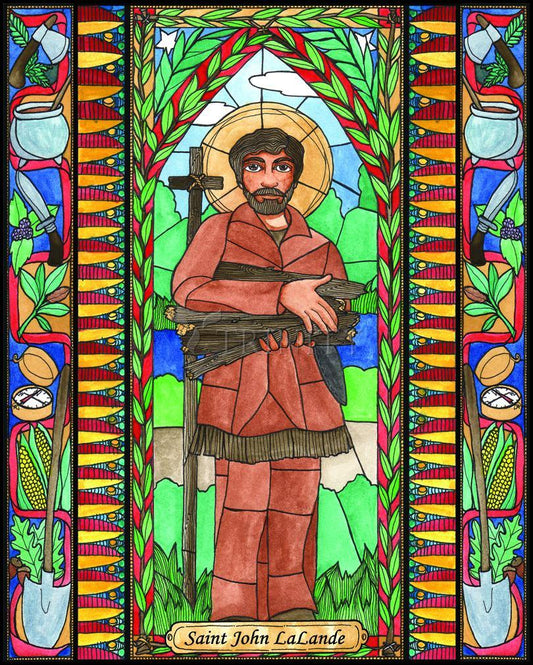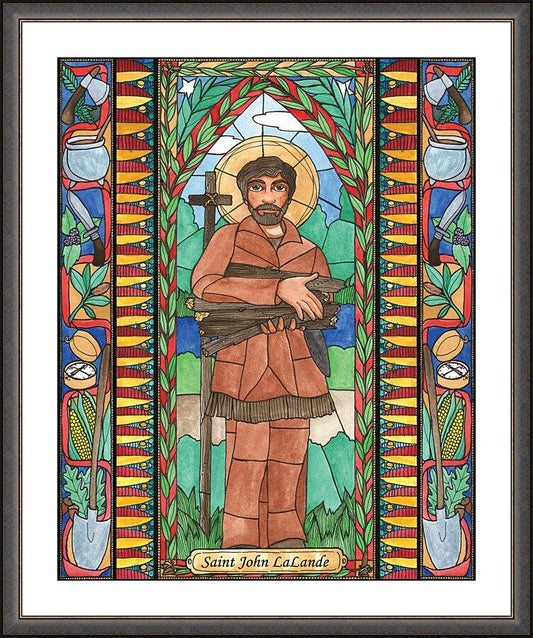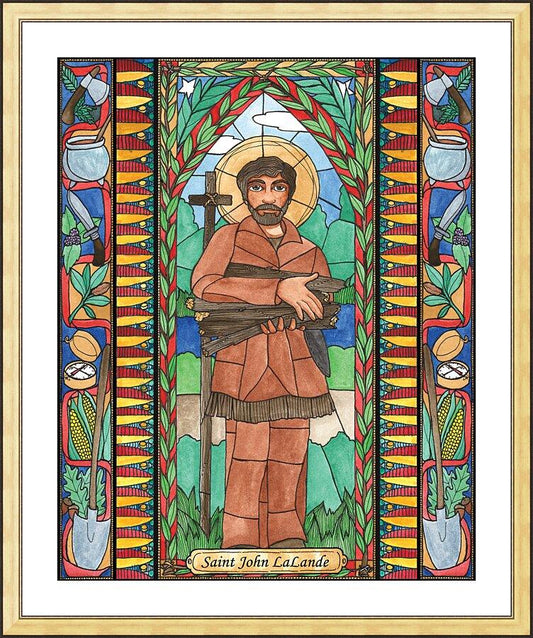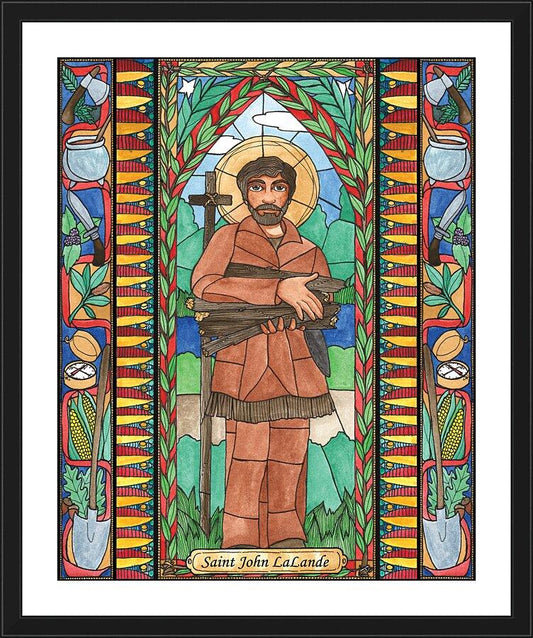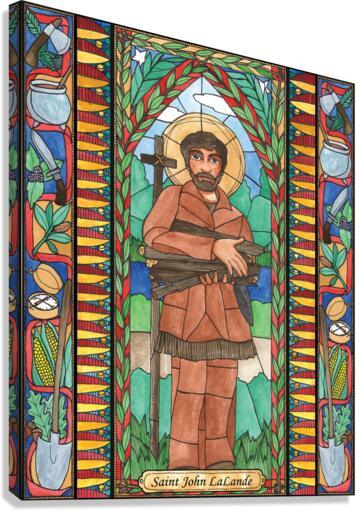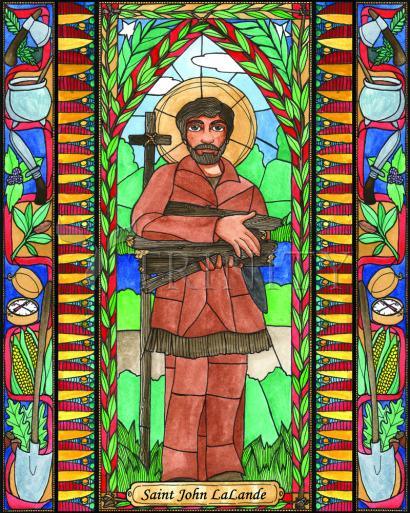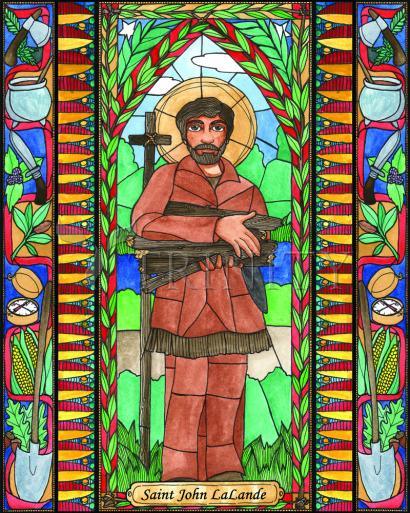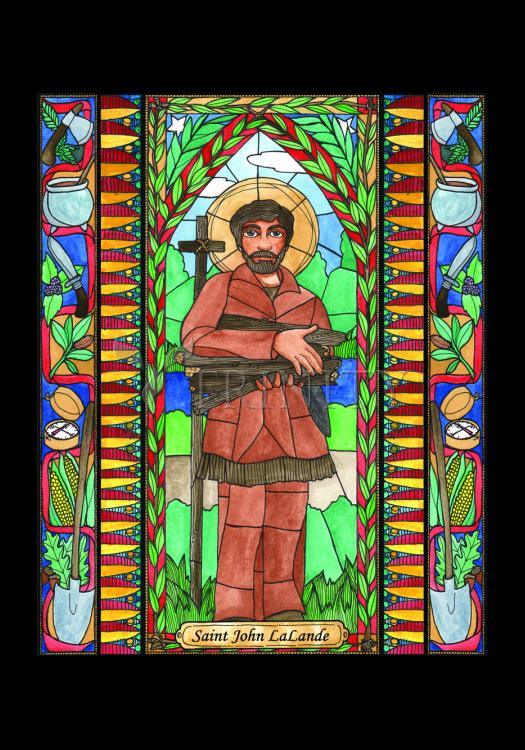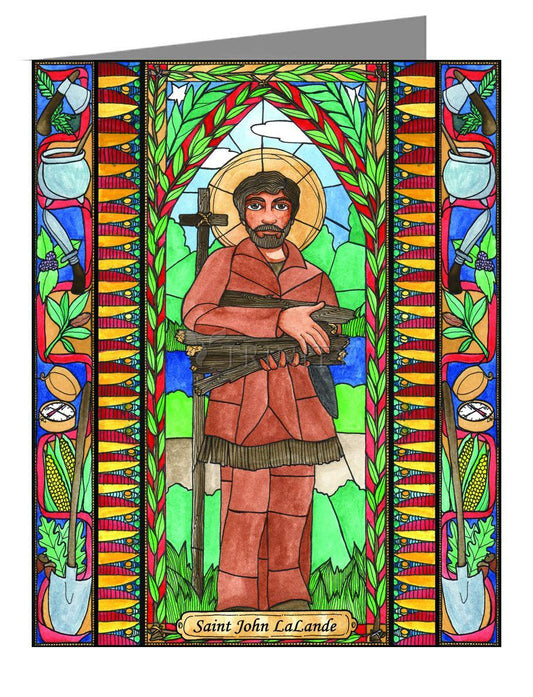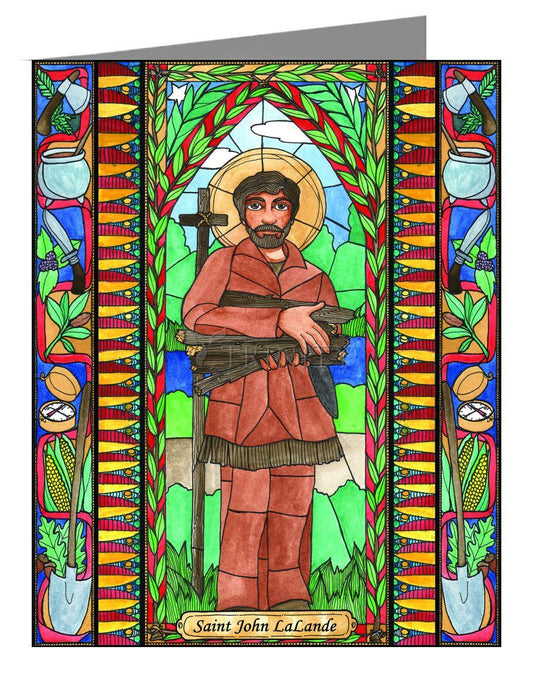ARTIST: Brenda Nippert
ARTWORK NARRATIVE:
John LaLande was born in Normandy, France. At 18 or 19 he traveled to New France (now Canada) to offer his life as a lay person who assisted the Jesuit missionaries in any way needed. John was assigned to Father Isaac Jogues who had been captured and escaped a Native village only to return to the same place to continue his mission. John paddled the canoe, gathered wood, built the fire, set up camp, cooked the meals and was armed with a gun to defend them if necessary. Through this dangerous journey, many abandoned the group and when they were captured, the rest were killed except for Father Jogues and John. They were held at the same village Father Jogues had escaped from. The two prayed and looked forward to Heaven. Father Jogues was killed first and the next day John was killed while trying to bury Father Jogues. Though their mission ended violently, these courageous men succeeded in bringing the faith to the new world, and even after they gave their lives, the seeds they planted continued to grow.
His feast day is October 19.
Read More
La Lande was a donné, meaning that he was not bound to the Society of Jesus by religious vows, but by a contract under the terms of which he placed himself completely at the disposal of the missionaries, who in return guaranteed him lodging, food, and help in case of illness, The first indication of his presence in the colony was on 14 Dec, 1642, when the effects of the late Jean Nicollet were up for auction and he came forward as purchaser of two books of piety which had belonged to the famous interpreter of the Algonkins. From 1642 to 1646 he seems to have been attached regularly to the Trois-Rivières residence. Father Anne de Nouë was then in charge of the residents of the house; this missionary was later buried at Trois-Rivères after a heroic death which was a noble inspiration to Jean de La Lande.
On 21 Aug. 1646 Father Jérôme Lalemant, the superior of the Jesuits of Quebec, decided to send Father Ignace Jogues to the Iroquois country in order to maintain peaceful relations with the Indians. For an associate, he was given Jean de La Lande, who was not unaware of the danger to which he was exposing himself. Jogues, La Lande and a few Hurons left Quebec on 24 Sept. of that year. The little band had scarcely got beyond Trois-Rivières when all the Hurons save one turned back, so impressed were they with the dangers of such a journey. With Jean de La Lande the sense of duty prevailed over everything else; he had promised to follow Jogues, and he was going to keep his word. When they reached their destination, the ambassadors of peace were treated as enemies. Victims for their faith, they were both killed: Jogues on 18 October, La Lande on 18 or 19 Oct. 1646.
The news did not reach Quebec until June 1647. The Relation gives a long account of Jogues's martyrdom. Of his associate it says: "One must not forget the young Frenchmen who was slain with the Father. That good youth, called Jean de la Lande, " a native of the City of Dieppe, as has been said, " seeing the dangers in which he was involving himself in so perilous a journey, protested at his departure that the desire of serving God was leading him into a country where he surely expected to meet death. This frame of mind has enabled him to pass into a life which no longer fears either the rage of those Barbarians, or the fury of the Demons, or the pangs of death."



